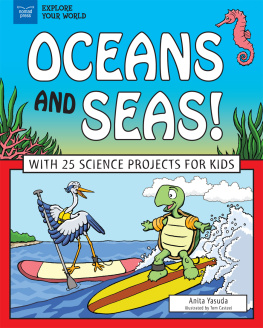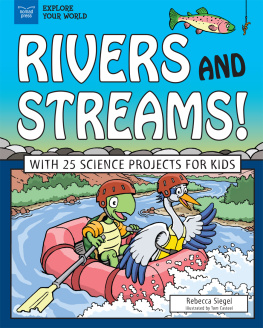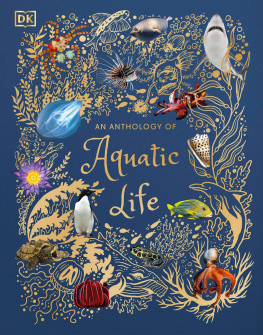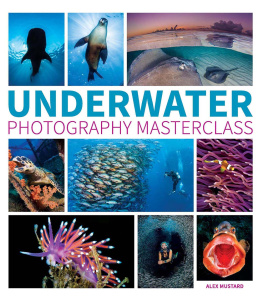I ve always admired trout. They are usually keenly aware and wary, which makes them elusive, and when I spent more time fishing for them than snorkeling with them, tricking one into biting my hook was one of the ultimate challenges. Trout have an intelligence that makes it difficult to capture them. And now that I try to observe them, I find that they are just as challenging to watch.
I slid into the cold, clear water of Fishing Creek, a tributary to the lower Susquehanna, in June to scope it out for a trip I would be running later in the summer. The architecture of the place instantly impressed. Water cascaded over shelves of sparkling slate-blue schist bedrock into pools lined with smoothed and angulated slabs. Quicksilver air bubbles danced back to the surface through the crystal water.
I saw a group of minnows and crept in to try to get a good photo and positive identification. I noticed the speckled snout of a trout sticking out from under a rock. I watched the fish look intently at me trying to figure out what I was and plan its next move. I pointed the camera at the trout, and the fish allowed me to snap a few shots before it sped away into the main flow below a short waterfall, leaving the minnows in a cloud of silt.
I followed, and my little trout shot off and joined another larger fish feeding in a deeper, swift current. I hid behind a rock and watched the two trout hunt. They plucked insect morsels from the water with precise movements while maintaining their position in the river. Watching them was experiencing the most incredible ballet. They exemplified grace, power, agility, and keen knowledge of their surroundings. I wasnt fooling them by hiding behind the rock. They knew I was there and allowed me to watch them feed. Finally, they perceived me as a big enough threat to warrant the expenditure of energy to escape my presence, and they were gone. I swam through the pool, but the only thing I found was a puff of sediment in a bedrock crevice where one of the trout had hidden and burst out of when I passed overhead. I caught peripheral glimpses of the fish through the rest of the trip but wasnt able to spend any time watching them again. I enjoyed the beauty of Fishing Creek, looked for the trout, and admired their ability to dominate a pool one minute and completely vanish the next.
These were rainbow trout, likely a few holdouts from the April stocking. While stocked fish might be less able to navigate wild streams as their wild-born cousins, these two certainly looked like they belonged here, though they didnt. It seemed these two had learned the way of the river with all its nooks and crannies and changes in flow compared to the smooth-walled, concrete-lined hatchery chutes where they were born and raised. It seemed they learned how to find their own food versus inhaling pellets tossed into the water by the scoopfull. These seemed to be as wary as their wild counterparts. Most rainbows dont survive the first few weeks of the season.
We raise rainbow trout in hatcheries and release them for fishermen to fish out. The put-and-take ritual is repeated every spring. The native trout populations in many streams have been replaced by nonnative rainbow trout. Rainbows are native to the Pacific Coast and are the most widely introduced trout globally. Antarctica is the only continent where rainbows arent stocked. Putting them in a river changes the energy flow dynamics of the stream to the same degree as removing all of the trees surrounding it.
Streams get half their food from the algae that grow on the rocks and wood on the bottom. Aquatic insects feed on the algae and are in turn eaten by fish. The other half of a creeks nutrition comes from outside of the stream either as insects that fall directly into the water where they are gobbled by fish or as leaves and other vegetative matter that falls into the water, which is eaten by aquatic insects that are then consumed by fish. When the trees surrounding a stream are removed, a cascade of negative effects occurs. First, sunlight warms the water in the stream, possibly making it too hot to support cold-water fish such as trout. Second, 50 percent of the streams food source is removed, and the aquatic feeding structure is completely reorganized. Placing rainbow trout in streams has the same effect. They remove 50 percent of the streams nutrition, and the energy flow of the stream is totally rearranged as a result. I understand the damage these fish do to our streams. I also know the number of people drawn to rivers because of them. Moreover, I know their beauty and elegance underwater, so I enjoy swimming with them.
I got into the Gunpowder River in north-central Maryland in August, more to cool off than to see anything. I actually didnt expect much at this intensely used section of the river. Theres a hole carved 10 feet into the bottom where the river bends left and splits around a large, submerged boulder. I jumped in and enjoyed the chilly water and weightlessness. I peered through my mask at the bottom, expecting a few minnows, maybe. Instead, I saw a foot-and-a-half rainbow holding steady in the gentle current at the base of the boulder. At first, I didnt believe my identification. It was too late in the season for a rainbow to have lasted in this heavily fished stream. Moreover, my noisy entry should have sent any trout in the vicinity flying for cover. It was probably just a big sucker that I mistook for a trout. I looked again and confirmed it was a rainbow. However, why was this fish here? I dove to the bottom on the side of the boulder opposite the trout and crept around the back of the rock until the fish came into view. The rainbow trout didnt move, which was very odd even for a hatchery fish. It was definitely a rainbow. Its silver body was dotted with clean-edged black dots and a blush of reddish-purple ran down its length. It held on the bottom, wagging its tail just enough to stay put in the current. I ran out of breath and came to the surface. Something wasnt quite right with this fish, as beautiful as it was. I dove for a closer look, and as I approached from the opposite side, I saw that its left eye was gone. It was blind on one side. I couldnt tell if this injury happened at the hatchery or since its release, but either way, I was amazed this fish was able to survive. I figured it wouldnt live for much longer and would soon fall victim to starvation, predation, or a hook.
The Loyalsock is a stream located in north-central Pennsylvania that runs wonderfully clear most of the time. It isnt without problems, though, and is afflicted by acid mine drainage. It was named the 2018 Pennsylvania River of the Year, and I embarked on a project to document the underwater changes of this river over 12 months. A year in the life of the River of the Year, as I like to think of it. I started in February and hadnt seen a fish in the first two months of the project. I geared up for my April visit. The creek was clear and cold as usual, and it felt like a biological desert. I didnt see any life, as usual, except for an abundance of caddis and mayfly larvae. Yet, there was not one fish. I was starting to wonder if I had made the right choice to invest this much time and effort. Air and water temperatures were starting to rise, so I should start to see more fish. I should have already seen typical wintertime fish like sculpin. Maybe this creek was just too sick with acid mine drainage.

Stocked school of trout.
The river flowed hard, and getting swept downstream was a real possibility. I wasnt prepared to get bounced through a Class II rapid, so I fought to make my way across the channel. I caught my breath in the lee of a large boulder while I looked for fish and wondered what I was doing there. A foot-long shadow slid downstream and dropped into the boulder eddy with me. It was a rainbow. Then a second, third, and fourth fish came in. They were all rainbows. In a matter of minutes, the eddy filled with a dozen rainbows ranging from a foot to a foot and a half. They were wary, and each rapid movement or snorkel clear made them jolt, but they never scattered far and quickly returned. They tolerated me in the large eddy and stayed there working the current. The cold eventually penetrated through my drysuit and underlying fleece layer, and I started to shiver. I was thrilled that I had finally seen fish in the Loyalsock, and they were trout at that! I was too excited by the experience of swimming with so many large fish to be suspicious. I left the Loyalsock satisfied.









